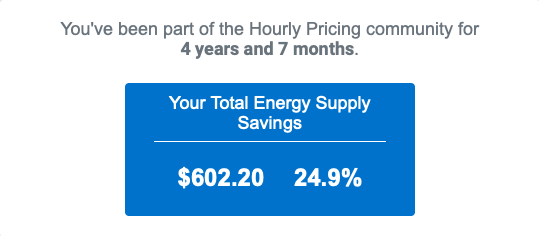
You don’t have to sign up for an alternative supplier. You have many choices, including ComEd’s Hourly Pricing program, that give you the opportunity to be green and cut your utility bills.
At CUB, we think it’s good to have choices in the electricity market, but it has to be informed choice. Educate yourself to navigate your choices in Illinois’ power market, and cut your electric bill.
What are my options?
If you are a ComEd or Ameren Illinois customer, here are your basic choices.
1) Stay with the regulated utility, Ameren or ComEd, as your electricity supplier.
2) Go with an alternative supplier that you choose.
3) Go with an alternative supplier that your local government chooses (“municipal aggregation”).
So which choice is best for me?
Here’s our analysis of each.
1) Staying with your utility as your supplier.
It’s likely that staying with ComEd or Ameren Illinois as your supplier is your best bet in terms of saving money. And it also gives you a lot of options to be green and cut your power bills. Read more in the “How can I go green” section below.
2) Go with an alternative supplier that you choose.
Illinois’ electricity market has been littered with bad deals, questionable marketing and rip-offs. In fact, since 2015, Illinois consumers with alternative electricity suppliers have lost more than $1 billion. Buyer beware. (Read the “Choosing Another Supplier” tab on our Electric Page for more information.)
Some consumers sign up for an alternative supplier because that company offers a “green” plan–an offer that is connected to renewable sources like wind and solar. These can be a legitimate choice, but CUB hears a lot of complaints from people who have paid much higher rates on these plans. Signing up for a green plan means the supplier will take some of your money to buy Renewable Energy Certificates (RECs). Buying a REC guarantees that renewable energy will be added somewhere on the grid—NOT that the electricity powering your TV and dishwasher is coming directly from renewable resources. (Read CUB’s fact sheet on green plans.)
3) Go with an alternative supplier that your local government chooses (“municipal aggregation”).
Under Illinois law, community leaders can negotiate power deals with an alternative supplier on behalf of all residents. If you want to go with an alternative supplier and your community offers a power deal, this tends to be a safer choice than signing up for a plan that a sales rep pitches to you. That’s because community leaders tend to be more transparent about an offer and they can use the combined buying power of local residents to leverage a better deal with a suppler. Some communities are able to secure renewable energy offers at a price that matches or is similar to the utility supply price. Having said all that, you should always weigh the benefits of a community power deal with the price you would have to pay and how it compares with the utility price. For more information, read CUB’s municipal aggregation fact sheet.
Ok, but if I stay with my utility, how can I ‘go green’?
Going with a “green” alternative supplier plan–and probably paying more–is NOT the only way to be green and protect the planet. You can participate in these these options, AND you’re a lot more likely to save money:
1) Go all in with energy efficiency.
Energy efficiency is about making your home more comfortable while using less energy. Illinois electric and gas utilities offer discounts/rebates on a wide range of efficiency upgrades. For example, Ameren and ComEd offer a $100 rebate on smart thermostats. The cleanest, cheapest energy is the energy you never use. Efficiency reduces overall electricity usage. This lessens the need for dirty power plants and makes the power grid less vulnerable to overload, and reduces power prices for everyone. Visit CUB’s Clean Energy page to get tips and learn more about energy efficiency programs offered by your utilities.
2) ComEd Peak Time Savings/Ameren Peak Time Rewards
These programs (one for ComEd customers, and one for Ameren customers) give you a bill credit if you’re able to reduce your energy usage for a limited number of hours on certain days (typically hot summer afternoons) when electricity demand is highest. Demand response programs like these give you incentives to reduce energy usage when demand is at its peak and fossil-fuel power plants work their hardest. Since a significant part of our power bills goes to making sure power plants can meet high demand, lowering peak demand can cut our costs.
3) ComEd Hourly Pricing/Ameren Power Smart Pricing
These demand-response programs–Hourly Pricing and Power Smart Pricing–charge a wholesale market price that can change hourly, compared with the traditional rate that only changes about twice a year. They encourage customers to put off heavy energy usage (laundry, for example) until prices are lowest: late night and early morning. These programs reduce peak demand and cut the need for fossil-fuel power plant operation. While savings are not guaranteed, typical participants have saved an average of 10-15 percent on their electricity supply costs.
4) Solar power.
Your home could be perfect for installing solar panels: Read CUB’s fact sheet. If your property has too much shade, or you live in an apartment, you could take part in a Community Solar program. Read all about it at our special SolarInTheCommunity.com website.
So there’s plenty of opportunity to make informed choices that are good for the planet, and lower your electric bill. If after you’ve read our resources, you have a question, concern or complaint about these choices or any utility matter, please don’t hesitate to contact CUB’s Consumer Hotline, at 1-800-669-5556.

